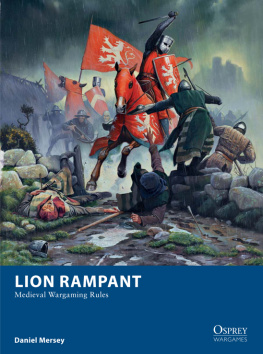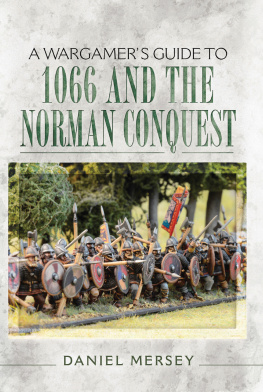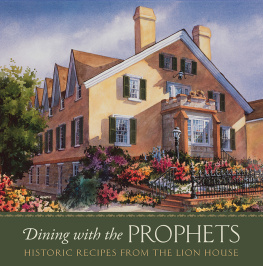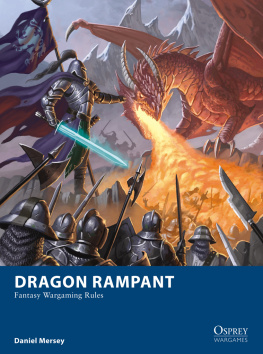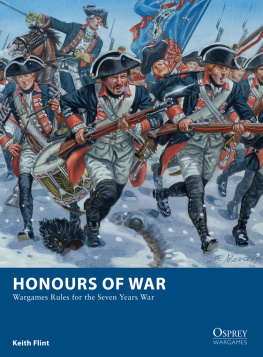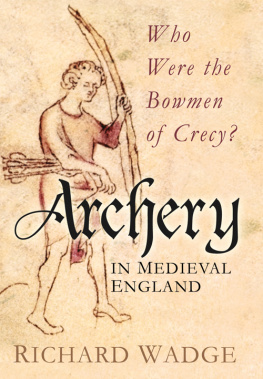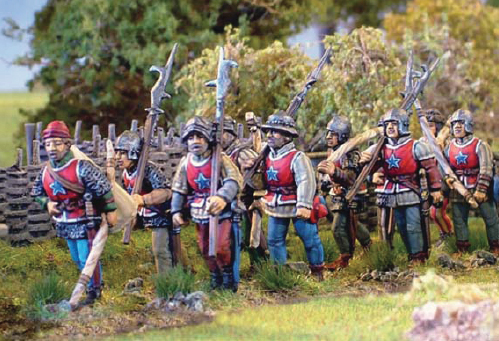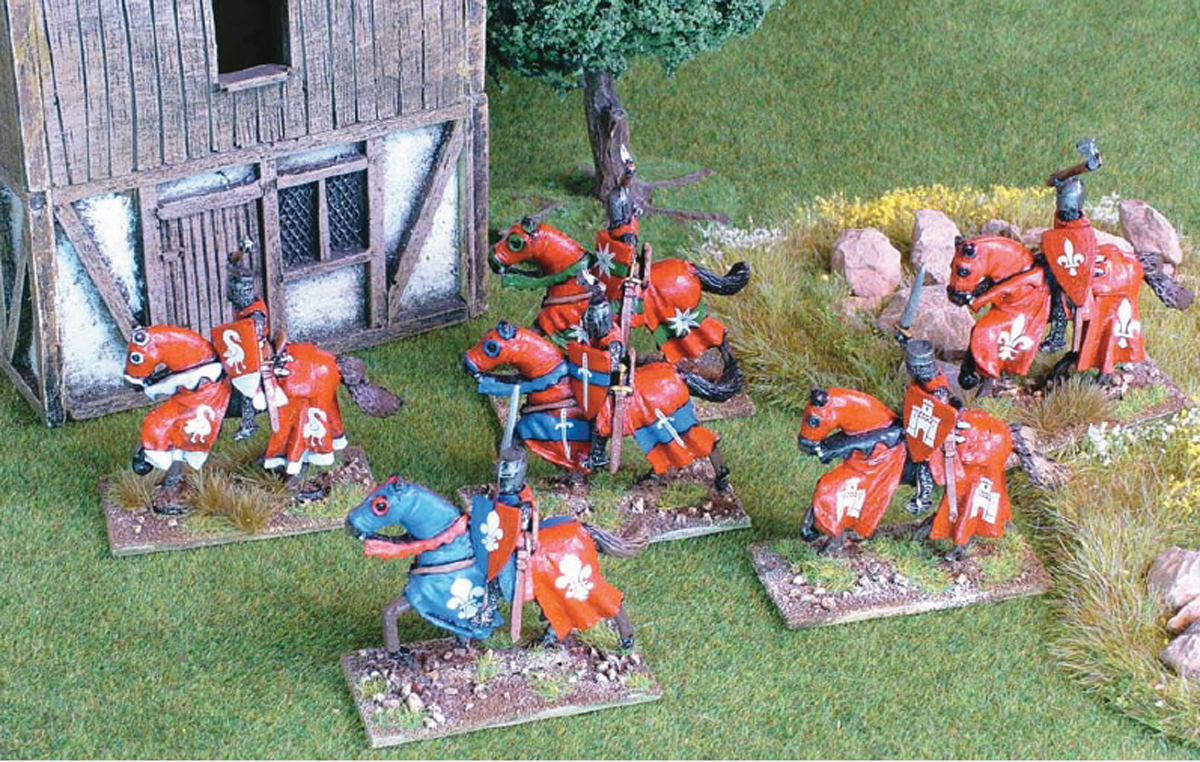LION RAMPANT
MEDIEVAL WARGAMING RULES
DANIEL MERSEY
CONTENTS
1. INTRODUCTION
Welcome to Lion Rampant, a set of simple miniature wargaming rules designed for fighting historical or Hollywood battles in the medieval period, from the rise of the Normans to the Hundred Years War and beyond.
This period is well suited to retinue-sized games involving a few dozen models per side as it was a time of anarchy, feuds, and raiding. Although full-sized battles took place, wars were often ended by siege or diplomacy but small, ferocious actions were fought many times over throughout Europe and the Middle East. Lion Rampant also embraces bravehearts in kilts, men in green tights, do-gooders at round tables, and (so long as you whisper it quietly) 1970s-style fantasy wargaming. At this point, I hold my hands up and admit that Ive been just as influenced by movies and fiction as I have reference books.
Alongside the straightforward battle rules, Lion Rampant presents a varied selection of scenarios and a Boasting system allowing players scope for choosing their own victory conditions. This means that you can concentrate on playing the scenario and enjoying yourself without getting bogged down in rules. The rules are model scale-neutral, although many gamers choose 28mm or 20mm armies; 15mm is more cost-effective but less heraldry-friendly.
Lion Rampant is a medieval-themed battle game rather than a detailed and scholarly simulation of combat in a specific century; I favour abstraction and stylization to allow quick and streamlined play, rather than rules that take into account the different types of arrowhead available. That said, good tactics will prevail and the scenarios prevent players from engaging in an arms race to find out who can paint the mostest knights the fastest.
Gameplay rewards using your units in the correct tactical way: knights are great at charging down enemies, but less useful for guarding convoys; spearmen are jacks of all trades and masters of none; and archers are to be feared at distance but cut down if you can get close enough. Battlefield confusion and chaos means that you might not get to use every one of your units in every turn of the game, so start thinking about your units priorities during the game even before youve set the table up.
Removal of models as casualties doesnt necessarily reflect sudden and violent death (although if youre that way inclined): some warriors run away, others are wounded, and the rest are killed. Model removal essentially tracks a units morale and current fighting ability rather than anything more literal: whether a unit is above or below half strength is important in the game.
My design goals for Lion Rampant tell you how I designed the rules and explain why they work as they do:
Games about knights should be fun. The emphasis is on a playable medieval-themed game rather than an over-detailed simulation of medieval warfare.
Use no unusual dice, cards, or supplements make it accessible for gamers new to the hobby.
Keep the rules simple, streamlined and abstracted where appropriate: dont make players continually thumb through the rulebook.
Quick play and minimal record keeping to allow multiple games in a session.
Gain period feel by differing profiles for troops; avoid complex core rules.
Think small-scale combat: reflect skirmish warfare not huge set-piece battles.
Let scenarios drive the game and make the victory conditions interesting and feel like a narrative story. Give players extra goals in each scenario to allow different ways to win.
Offer malleable army selection: no hard and fast army lists.
Embrace medieval caricatures: knights should be headstrong, spearmen resolute, tribesmen fierce, and light cavalry agile. Performance is abstracted: make sure units feel right.
Create a medieval miniature wargame thats an excuse to push some colourfully painted models around the table.
Oh the glamour Mounted Men-at-Arms swan about like they own the place (which they do). Crusader Miniatures from the authors collection. (Henry Hyde)
My overall goal was to design a medieval miniatures game that is easy to learn, makes you think about how best to use your resources, and provides entertainment as you do so: I hope you find Lion Rampant achieves this. Roll sixes and enjoy!
2. BATTLE RULES
SETTING UP A GAME
To play a game of Lion Rampant youll need to read through this section on Battle Rules first, and keep the book handy through your first few games. Most players will be familiar with the basics after a couple of games. To play, youll need to bring together the following:
This book (of course)
A list of unit profiles (theres a blank one included at the end of the book)
A friendly opponent (although you may make your own rules for play solo or playing with larger groups)
An army of medieval miniatures for each player (the section on Mustering Your Retinue gives more detail on this, but youll usually field around 4060 models in the standard game)
A good handful of dice (12 per player should do it, but more never hurts)
A tape measure (preferably showing inches)
A table to play on and some model terrain (a flat surface ideally 6x4 or larger)
Some markers to indicate Battered units (gaming gems or dead/wounded models are great for this)
Design note:Im deliberately vague about table sizes in Lion Rampant, but for good reason! Most scenarios will play out nicely on a 6x4 table, but depending on the units in your retinue, you may be advantaged or disadvantaged by larger or smaller tables. A good game between 1218 point infantry retinues can be ground out on a table no more than 4x3, but ultimately, play on a table size that suits you (or more likely, a table size that you have available). Some scenarios benefit from a larger table, especially those requiring manoeuvre more than combat.
Lion Rampant is easy to play if your models are based individually. It doesnt matter too much how you base your models, although common dimensions for 28mm models are 20x20mm squares or 25mm rounds for foot, and 25x50mm for mounted.
If your collection includes multiple models on a communal base, you can still play Lion Rampant without much difficulty: just be prepared to ignore the direction the models are actually facing and think of them as a blob of troops with no flanks or rear. Youll also need to mark casualties as they occur (small dice are a discreet way of doing so).
COMMANDING YOUR RETINUE
Each players army known as your retinue in Lion Rampant is built from a variety of units, each representing a class of warrior from the medieval period. The rules dont impose many restrictions when choosing units, although arming 12th-century western knights with bows will raise your opponents eyebrows so carry out a little research about the units your retinue should contain (or flick through to the end of this book and choose a ready-made retinue that you think youll enjoy commanding).
Lion Rampant is written for retinues comprising 24 points; depending on their abilities, individual units generally cost between 1 and 6 points each, but most retinues will be built of around 6 units. Mounted units begin with 6 models each, whereas Foot units mostly begin with 12 models each (Men-at-Arms and Bidowers have just 6 models). See the section on Mustering Your Retinue for more details on the units available to you.

